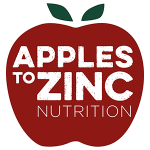The topic of childhood obesity has been hitting the headlines more and more frequently over the last year and is referred to as an epidemic. Rates of childhood obesity are at their highest with an estimated 20% of 5 years old (reception children) and 33% of 11-year-olds (school year 6) recorded as overweight or obese and boys much more likely to be so*
It’s a topic that has so much emotion attached to it, a substantial amount of denial and also confusion as to how to resolve the issue.
I suspect there are a number of factors contributing to this “crisis” and understanding these may help with the solution. Here are just some of those possible
- An increase in sugar consumption over time – sugar provides high levels of energy which, if not utilised, may be stored as fat.
- A decrease in activity levels – this may be in part due to the focus schools are giving to academic subjects over the more physical subjects, children being driven to school instead of walking, families being more time poor and not getting out or the increase in time spent on electronic devices in the home.
- The increase in portion sizes given to children – meals out can be large in size or there can be an over-reliance on snacks
- An over-reliance on processed foods and fast food – these foods can be low in nutrients and high in unhealthy fats
- The increase in caesarean births – There is a link between the gut microbiome and weight gain. C-section births don’t provide the same exposure to initial gut bacteria and those that do colonise may increase the risk of weight gain**
- A lack of sleep – whilst we sleep our appetite hormones are reset. A lack of sleep is known to increase appetite hormones and may mean overeating is more likely
Tackling obesity among children is not easy but the first step is to recognise that your child is not a healthy weight for their height. The next step to consider is the language you use with your child. Words such as dieting, being fat or chubby are all negative and may increase anxieties or negative body image and should be avoided – much better are to talk about eating well, strength and improving energy and not making a big deal around changing weight.
Considering what your child is eating and the quantity consumed is key. Whilst weight gain and excess body fat is greatly more complex than calories in versus calories out, it is a consideration and reducing portions and snacks and limiting foods high in sugar and unhealthy fats may well help with the optimisation of weight.
Radically reducing calories and portions is best avoided. Children do need a relatively high number of nutrients for their size to enable them to grow and develop optimally. Restricting the quantity of foods consumed is likely to result in a lack of key nutrients and may impact normal growth.
Assessing activity levels is a key factor. Government recommendations are for an hour of moderate activity levels per day. Many children under the age of 18 are failing to hit this recommended level.
A more in-depth look at childhood obesity, the causes, risk factors and future implications with practical tips on how to support your child can be found in my online child nutrition course which is coming soon.
*Public Health England – National Child Measurement programme 2014/15
** Kuhle S et al (2015) Association between caesarean section and childhood obesity: a systematic review and meta-analysis. Obesity Reviews Vol 16, issue 4.
